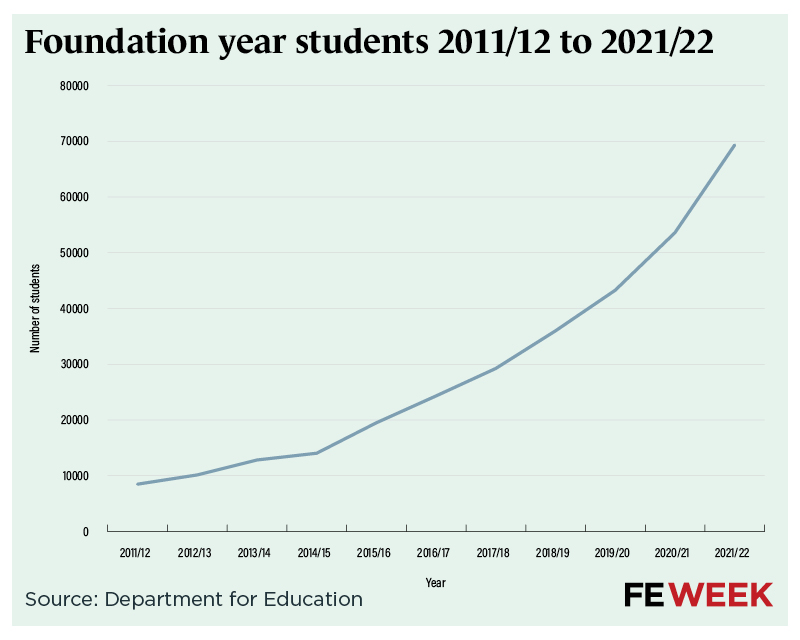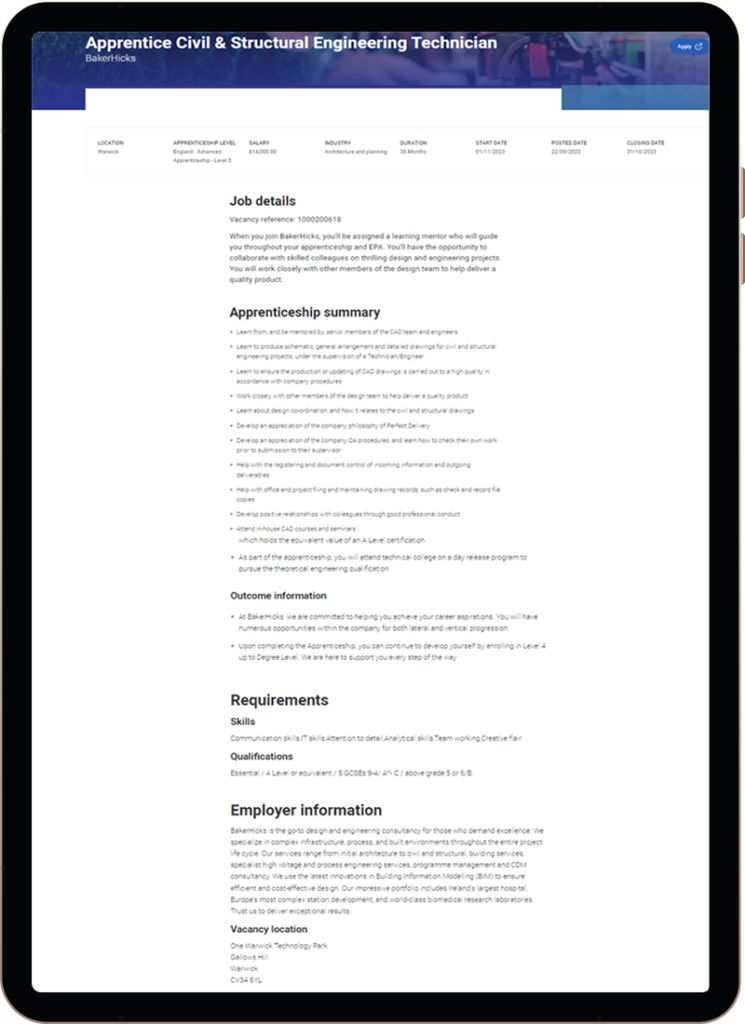| Setting name | LA area | Setting Mitigation (16/10/2023) |
| Atherton St George’s CofE Primary School | Wigan | All pupils in face-to-face education |
| Bushey and Oxhey Infant School | Hertfordshire | All pupils in face-to-face education |
| Camborne College (part of Cornwall College) | Cornwall | All pupils in face-to-face education |
| Cann Hall Primary School | Essex | All pupils in face-to-face education |
| Cheddington Combined School | Buckinghamshire | All pupils in face-to-face education |
| Christ Church Church of England Academy | Bradford | All pupils in face-to-face education |
| Churchfield CofE Academy | Hertfordshire | All pupils in face-to-face education |
| Crossflatts Primary School | Bradford | All pupils in face-to-face education |
| Dean Trust Rose Bridge | Wigan | All pupils in face-to-face education |
| Dixons Broadgreen Academy | Liverpool | All pupils in face-to-face education |
| Ellesmere Port Catholic High School, a Voluntary Academy | Cheshire West and Chester | All pupils in face-to-face education |
| Elm Hall Primary School | Essex | All pupils in face-to-face education |
| Exmouth Community College | Devon | All pupils in face-to-face education |
| Golden Flatts Primary School | Hartlepool | All pupils in face-to-face education |
| Gordano School | North Somerset | All pupils in face-to-face education |
| Greenway Junior School | West Sussex | All pupils in face-to-face education |
| Havant Academy | Hampshire | All pupils in face-to-face education |
| Kings College Guildford | Surrey | All pupils in face-to-face education |
| Knuzden St Oswald’s Church of England Primary Academy | Lancashire | All pupils in face-to-face education |
| Links Academy | Hertfordshire | All pupils in face-to-face education |
| Manningtree High School | Essex | All pupils in face-to-face education |
| Newmarket Academy | Suffolk | All pupils in face-to-face education |
| Peterborough College (part of Inspire Education Group) | Peterborough | All pupils in face-to-face education |
| Priory Primary School, Bicknacre | Essex | All pupils in face-to-face education |
| Shelley College, A Share Academy | Kirklees | All pupils in face-to-face education |
| Shoeburyness High School | Southend-on-Sea | All pupils in face-to-face education |
| Sir William Borlase’s Grammar School | Buckinghamshire | All pupils in face-to-face education |
| Southview School | Essex | All pupils in face-to-face education |
| Spring Meadow Primary School & School House Nursery | Essex | All pupils in face-to-face education |
| St Aloysius RC College | Islington | All pupils in face-to-face education |
| St Anne’s Catholic Primary School | Hampshire | All pupils in face-to-face education |
| St Bernard’s RC Primary School, Bolton | Bolton | All pupils in face-to-face education |
| St Edward’s Catholic Academy | Derbyshire | All pupils in face-to-face education |
| St Mary Magdalene CofE Primary School | Westminster | All pupils in face-to-face education |
| St Mary’s Priory RC Infant School | Haringey | All pupils in face-to-face education |
| St Stephen and All Martyrs’ CofE School, Lever Bridge | Bolton | All pupils in face-to-face education |
| Stowupland High School | Suffolk | All pupils in face-to-face education |
| Thameside Primary School | Thurrock | All pupils in face-to-face education |
| The Grove Primary Academy | Surrey | All pupils in face-to-face education |
| The Magna Carta School | Surrey | All pupils in face-to-face education |
| Watford Grammar School for Boys | Hertfordshire | All pupils in face-to-face education |
| Westside School | Hammersmith and Fulham | All pupils in face-to-face education |
| Winchmore School | Enfield | All pupils in face-to-face education |
| Ark John Keats Academy | Enfield | All pupils in face-to-face education |
| Avenue Centre for Education | Luton | All pupils in face-to-face education |
| Baildon Church of England Primary School | Bradford | All pupils in face-to-face education |
| Baskerville School | Birmingham | All pupils in face-to-face education |
| Buttsbury Junior School | Essex | All pupils in face-to-face education |
| Colyton Grammar School | Devon | All pupils in face-to-face education |
| Eldwick Primary School | Bradford | All pupils in face-to-face education |
| Farlingaye High School | Suffolk | All pupils in face-to-face education |
| Farnborough College of Technology | Hampshire | All pupils in face-to-face education |
| Grantham College | Lincolnshire | All pupils in face-to-face education |
| Kingsbury High School | Brent | All pupils in face-to-face education |
| Marling School | Gloucestershire | All pupils in face-to-face education |
| Marple Sixth Form College (part of Trafford College Group) | Stockport | All pupils in face-to-face education |
| Maryvale Catholic Primary School | Birmingham | All pupils in face-to-face education |
| Merrylands Primary School | Essex | All pupils in face-to-face education |
| Mulberry Stepney Green Mathematics and Computing College | Tower Hamlets | All pupils in face-to-face education |
| Myton School | Warwickshire | All pupils in face-to-face education |
| Ortu Corringham Primary School and Nursery | Thurrock | All pupils in face-to-face education |
| Ravens Academy | Essex | All pupils in face-to-face education |
| Selworthy Special School | Somerset | All pupils in face-to-face education |
| St Joseph’s Catholic Voluntary Academy | Leicestershire | All pupils in face-to-face education |
| Steeple Bumpstead Primary School | Essex | All pupils in face-to-face education |
| Stepney All Saints Church of England Secondary School | Tower Hamlets | Mix of face-to-face and remote arrangements |
| Surrey Street Primary School | Luton | All pupils in face-to-face education |
| The Link School | Sutton | All pupils in face-to-face education |
| The Macclesfield Academy | Cheshire East | All pupils in face-to-face education |
| Westlands School | Kent | All pupils in face-to-face education |
| Abbey Lane Primary School | Sheffield | All pupils in face-to-face education |
| All Saints C of E Primary School | Manchester | All pupils in face-to-face education |
| Altrincham College | Trafford | All pupils in face-to-face education |
| Anglo European School | Essex | All pupils in face-to-face education |
| Ark Boulton Academy | Birmingham | All pupils in face-to-face education |
| Arthur Bugler Primary School | Thurrock | All pupils in face-to-face education |
| Aston Manor Academy | Birmingham | All pupils in face-to-face education |
| Barnes Farm Junior School | Essex | All pupils in face-to-face education |
| Batley Girls High School | Kirklees | All pupils in face-to-face education |
| Baynards Primary School | Essex | All pupils in face-to-face education |
| Beehive Lane Community Primary School | Essex | All pupils in face-to-face education |
| Bentfield Primary School and Nursery | Essex | All pupils in face-to-face education |
| Birchington Church of England Primary School | Kent | All pupils in face-to-face education |
| Bishop Douglass School Finchley | Barnet | All pupils in face-to-face education |
| Bispham Endowed Church of England Primary School | Blackpool | All pupils in face-to-face education |
| Broomfield Primary School | Essex | All pupils in face-to-face education |
| Buckhurst Hill Community Primary School | Essex | All pupils in face-to-face education |
| Canon Slade School | Bolton | All pupils in face-to-face education |
| Carmel College | Darlington | All pupils in face-to-face education |
| Cherry Tree Academy | Essex | All pupils in face-to-face education |
| Chipping Ongar Primary School | Essex | All pupils in face-to-face education |
| Clacton County High School | Essex | All pupils in face-to-face education |
| Claydon High School | Suffolk | All pupils in face-to-face education |
| Cleeve Park School | Bexley | All pupils in face-to-face education |
| Corpus Christi Catholic Primary School | Lambeth | All pupils in face-to-face education |
| Cranbourne | Hampshire | All pupils in face-to-face education |
| Danetree Primary School | Surrey | All pupils in face-to-face education |
| Denbigh School | Milton Keynes | All pupils in face-to-face education |
| Donnington Wood Infant School and Nursery Centre | Telford and Wrekin | All pupils in face-to-face education |
| East Bergholt High School | Suffolk | All pupils in face-to-face education |
| East Tilbury Primary School | Thurrock | All pupils in face-to-face education |
| Elmstead Primary School | Essex | All pupils in face-to-face education |
| Eversley Primary School | Essex | All pupils in face-to-face education |
| Ferryhill School | County Durham | All pupils in face-to-face education |
| Godinton Primary School | Kent | All pupils in face-to-face education |
| Great Leighs Primary School | Essex | All pupils in face-to-face education |
| Great Tey Church of England Voluntary Controlled Primary School | Essex | All pupils in face-to-face education |
| Hadleigh High School | Suffolk | All pupils in face-to-face education |
| Harlowbury Primary School | Essex | All pupils in face-to-face education |
| Harwich and Dovercourt High School | Essex | All pupils in face-to-face education |
| Hatfield Heath Primary School | Essex | All pupils in face-to-face education |
| Hatfield Peverel St Andrew’s Junior School | Essex | Mix of face-to-face and remote arrangements |
| Henham and Ugley Primary and Nursery School | Essex | All pupils in face-to-face education |
| Hillhouse CofE Primary School | Essex | All pupils in face-to-face education |
| Hockley Primary School | Essex | All pupils in face-to-face education |
| Holcombe Grammar School | Medway | All pupils in face-to-face education |
| Holy Trinity Catholic Voluntary Academy | Nottinghamshire | All pupils in face-to-face education |
| Holy Trinity CofE Primary School, Eight Ash Green and Aldham | Essex | All pupils in face-to-face education |
| Hornsey School for Girls | Haringey | All pupils in face-to-face education |
| Hounsdown School | Hampshire | All pupils in face-to-face education |
| Jerounds Primary Academy | Essex | All pupils in face-to-face education |
| Joyce Frankland Academy, Newport | Essex | All pupils in face-to-face education |
| Katherine Semar Infant School | Essex | All pupils in face-to-face education |
| Katherine Semar Junior School | Essex | All pupils in face-to-face education |
| Katherines Primary Academy and Nursery | Essex | All pupils in face-to-face education |
| King Ethelbert School | Kent | All pupils in face-to-face education |
| Kingsdown School | Southend-on-Sea | All pupils in face-to-face education |
| Lambourne Primary School | Essex | All pupils in face-to-face education |
| Langney Primary Academy | East Sussex | All pupils in face-to-face education |
| Lubbins Park Primary Academy | Essex | All pupils in face-to-face education |
| Markyate Village School and Nursery | Hertfordshire | All pupils in face-to-face education |
| Mayflower Primary School | Leicester | All pupils in face-to-face education |
| Mersea Island School | Essex | All pupils in face-to-face education |
| Mistley Norman Church of England Primary School | Essex | All pupils in face-to-face education |
| Myatt Garden Primary School | Lewisham | All pupils in face-to-face education |
| Northampton International Academy | West Northamptonshire | All pupils in face-to-face education |
| Our Lady’s Catholic High School | Lancashire | All pupils in face-to-face education |
| Outwoods Primary School | Warwickshire | All pupils in face-to-face education |
| Palmarsh Primary School | Kent | All pupils in face-to-face education |
| Park View School | Haringey | All pupils in face-to-face education |
| Parks Primary School | Leicester | All pupils in face-to-face education |
| Petroc | Devon | All pupils in face-to-face education |
| Pippins School | Slough | All pupils in face-to-face education |
| Prince Albert Junior and Infant School | Birmingham | All pupils in face-to-face education |
| Redhill School | Dudley | All pupils in face-to-face education |
| Roding Valley High School | Essex | Mix of face-to-face and remote arrangements |
| Royal College Manchester (Seashell Trust) | Stockport | All pupils in face-to-face education |
| Sale Grammar School | Trafford | All pupils in face-to-face education |
| Sandbach School | Cheshire East | All pupils in face-to-face education |
| Scalby School | North Yorkshire | Mix of face-to-face and remote arrangements |
| Seven Mills Primary School | Tower Hamlets | All pupils in face-to-face education |
| Shawfield Primary School | Surrey | All pupils in face-to-face education |
| Sir Thomas Boughey Academy | Staffordshire | All pupils in face-to-face education |
| Springfield Primary School | Essex | All pupils in face-to-face education |
| St Andrew’s CofE Primary School, Over Hulton | Bolton | All pupils in face-to-face education |
| St Anne’s Catholic Primary School, Harlow Green | Gateshead | All pupils in face-to-face education |
| St Bartholomew’s Catholic Primary School, Swanley | Kent | All pupils in face-to-face education |
| St Bede’s Catholic School and Byron Sixth Form College | County Durham | Mix of face-to-face and remote arrangements |
| St Benet’s Catholic Primary School, Ouston | County Durham | All pupils in face-to-face education |
| St Clere’s School | Thurrock | Mix of face-to-face and remote arrangements |
| St Columba’s Catholic Primary School, Wallsend | North Tyneside | All pupils in face-to-face education |
| St Elizabeth’s Catholic Voluntary Academy | Derbyshire | All pupils in face-to-face education |
| St Francis’ Catholic Primary School | Newham | All pupils in face-to-face education |
| St Francis Catholic Primary School, South Ascot | Windsor and Maidenhead | All pupils in face-to-face education |
| St Gregory’s Catholic Science College | Brent | All pupils in face-to-face education |
| St Helena School | Essex | All pupils in face-to-face education |
| St Ignatius College | Enfield | All pupils in face-to-face education |
| St James’ Catholic Primary School, Hebburn | South Tyneside | All pupils in face-to-face education |
| St James’ Church of England Voluntary Aided Primary School | Kent | All pupils in face-to-face education |
| St John Bosco Catholic Primary School, Town End Farm, Sunderland | Sunderland | All pupils in face-to-face education |
| St John Catholic Primary School | Hertfordshire | All pupils in face-to-face education |
| St John Vianney Catholic Primary School, West Denton | Newcastle upon Tyne | All pupils in face-to-face education |
| St John Vianney RC Primary School | Haringey | All pupils in face-to-face education |
| St Joseph’s Catholic Primary School | Buckinghamshire | All pupils in face-to-face education |
| St Lawrence Church of England Primary School, Rowhedge | Essex | All pupils in face-to-face education |
| St Leonard’s Catholic School, Durham | County Durham | Mix of face-to-face and remote arrangements |
| St Mary and St John Junior and Infant School | Birmingham | All pupils in face-to-face education |
| St Michael’s Catholic School | Buckinghamshire | All pupils in face-to-face education |
| St Paul’s Catholic Primary School, Thames Ditton | Surrey | All pupils in face-to-face education |
| St Teresa’s Catholic Primary School | Darlington | All pupils in face-to-face education |
| St Thomas More Catholic Comprehensive School | Greenwich | All pupils in face-to-face education |
| St Thomas More Catholic School, Blaydon | Gateshead | All pupils in face-to-face education |
| St William of York Catholic Primary School | Bolton | All pupils in face-to-face education |
| Stanway Fiveways Primary School | Essex | All pupils in face-to-face education |
| Sunny Bank Primary School | Kent | All pupils in face-to-face education |
| Tendring Technology College | Essex | All pupils in face-to-face education |
| The Billericay School | Essex | Mix of face-to-face and remote arrangements |
| The Bromfords School | Essex | Mix of face-to-face and remote arrangements |
| The Coopers’ Company and Coborn School | Havering | All pupils in face-to-face education |
| The Ellen Wilkinson School for Girls | Ealing | All pupils in face-to-face education |
| The FitzWimarc School | Essex | All pupils in face-to-face education |
| The Gilberd School | Essex | All pupils in face-to-face education |
| The Holy Family Catholic School, a Voluntary Academy | Bradford | All pupils in face-to-face education |
| The Honywood Community Science School | Essex | Mix of face-to-face and remote arrangements |
| The London Oratory School | Hammersmith and Fulham | Mix of face-to-face and remote arrangements |
| The Palmer Catholic Academy | Redbridge | All pupils in face-to-face education |
| The Ramsey Academy, Halstead | Essex | All pupils in face-to-face education |
| The Thomas Lord Audley School | Essex | All pupils in face-to-face education |
| Thomas Bullock Church of England Primary and Nursery Academy | Norfolk | All pupils in face-to-face education |
| Thurstable School Sports College and Sixth Form Centre | Essex | Mix of face-to-face and remote arrangements |
| Thurston Community College | Suffolk | All pupils in face-to-face education |
| Waddesdon Church of England School | Buckinghamshire | All pupils in face-to-face education |
| Wallingford School | Oxfordshire | All pupils in face-to-face education |
| Water Lane Primary Academy | Essex | All pupils in face-to-face education |
| Welbourne Primary School | Haringey | All pupils in face-to-face education |
| Wells Park School | Essex | All pupils in face-to-face education |
| White Court School | Essex | All pupils in face-to-face education |
| White Hall Academy and Nursery | Essex | All pupils in face-to-face education |
| Widford School | Hertfordshire | All pupils in face-to-face education |
| Winter Gardens Academy | Essex | All pupils in face-to-face education |
| Wood Green Academy | Sandwell | All pupils in face-to-face education |
| Woodkirk Academy | Leeds | All pupils in face-to-face education |
| Woodville Primary School | Essex | All pupils in face-to-face education |
| Wyburns Primary School | Essex | All pupils in face-to-face education |







